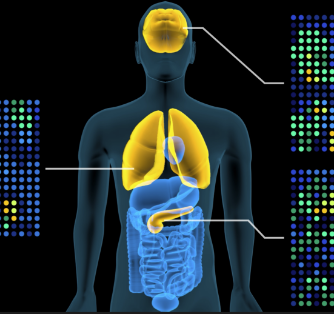Making the impossible possible
Our laboratory is dedicated to pioneering new frontiers in research and catalyzing transformative changes across industries by harnessing the power of nanodevices and quantum technologies. Our mission is to turn what was once considered impossible in the life sciences into a reality. We achieve this by fostering the convergence of diverse fields, including chemistry, engineering, nanotechnology, microfluidic chemistry, quantum chemistry, and informatics. Our research activities are driven by the belief that breakthroughs in life science and medicine can be achieved through interdisciplinary collaboration. Thus, we not only engage in fundamental research to validate our principles but also actively collaborate across the medical and engineering domains. Additionally, we extend our reach to society by establishing ventures and partnering with corporations for joint research initiatives. The Yasui Laboratory comprises a dynamic team of members who bring expertise from various backgrounds, including life sciences, chemistry, engineering, medicine, drug discovery, and informatics. Our common thread is a shared passion for innovative research that transcends traditional boundaries and aims to create something truly groundbreaking.
research
Body fluids such as blood and urine contain extracellular vesicles released by various cells throughout the body. To specifically isolate extracellular vesicles originating from a particular tissue, a novel device becomes essential. In our laboratory, we are actively engaged in the development of a method that allows for the collection of extracellular vesicles from tissue surfaces while preserving their spatio-temporal information, utilizing advanced nanodevices.
Nat. Commun., 14, 6915 (2023), 10.1038/s41467-023-42593-9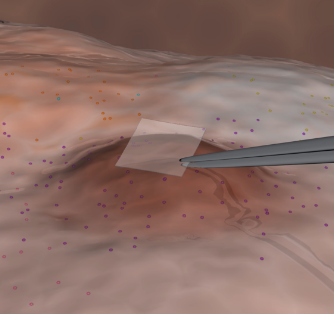
The separation of extracellular vesicles and biomolecules in body fluids represents the foundational step in all analytical procedures. In our laboratory, we are actively engaged in the development of nanodevices aimed at the comprehensive capture of extracellular vesicles present in body fluids. We have pioneered a groundbreaking technology for the isolation of extracellular vesicles in urine through the utilization of nanowires, which are minuscule rod-shaped structures. Our research has revealed that nanowires serve as a novel material capable of capturing more than 99% of extracellular vesicles in urine.
Sci. Adv., 3, e1701133 (2017), 10.1126/sciadv.1701133.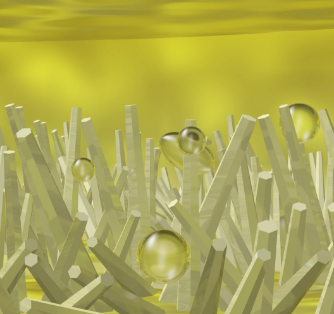
Through the modification of nanowires with polyketone chains, we have significantly improved the binding capacity for extracellular vesicles, thus enabling the capture of these vesicles with increased purity. Our ongoing research is dedicated to advancing the nanowire technology as a specialized nanodevice tailored for the capture of extracellular vesicles associated with ovarian cancer. This development holds great promise in enhancing ovarian cancer diagnosis and predicting treatment outcomes.
Sci. Adv., 9, eade6958 (2023), 10.1126/sciadv.ade6958.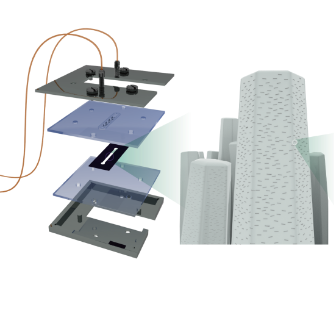
With a dedicated focus on hydrogen bonding interactions occurring between nanowire surfaces and cell-free DNA (cfDNA), we have delved into the mechanisms governing the “capture” of cfDNA through hydrogen bonding, as well as the subsequent “release” of cfDNA. Our research involves the introduction of molecules capable of competitive binding to facilitate the release process. We are actively developing cutting-edge technology for both the capture and release of urinary cfDNA. Leveraging our catch and release technology designed for urinary cfDNA, we have achieved a significant milestone by successfully detecting the IDH1 mutation –a genetic anomaly observed in gliomas– from urinary cfDNA.
Biosens. Bioelectron., 234, 115318 (2023), 10.1016/j.bios.2023.115318.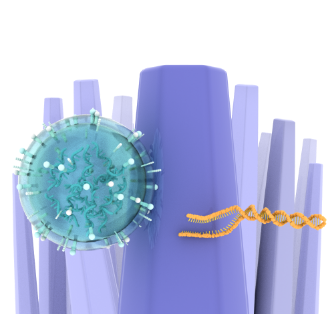
We are actively engaged in the development of an integrated platform that accomplishes two critical tasks simultaneously: trapping extracellular vesicles and detecting specific extracellular vesicle membrane proteins. This innovative platform involves the placement of nanowires at the bottom of a well plate. Through the implementation of this platform, we conducted a comprehensive analysis of the expression ratios of two distinct membrane proteins in extracellular vesicles obtained from urine samples. These samples were drawn from both patients with brain tumors and non-cancer patients. Our findings revealed notable differences in the expression ratios between these two groups, suggesting the potential use of these ratios as a novel diagnostic indicator for brain tumors.
ACS Nano, 17, 2235 (2023), 10.1021/acsnano.2c08526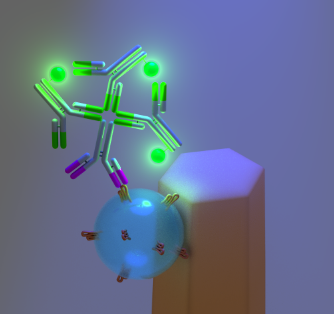
Utilizing a nanodevice composed of approximately 100 million densely packed nanowires within a microfluidic channel, we have successfully engineered a device capable of more efficiently collecting extracellular endoplasmic reticulum from urine. Furthermore, this device enables the extraction of a substantial quantity of microRNA from just 1 mL of urine, surpassing the capabilities of conventional methods. Through the application of this groundbreaking device, we have made a significant breakthrough. It has been demonstrated that characteristic microRNAs secreted by brain tumors can indeed be detected in urine. Notably, this marks the world’s first discovery that brain tumors can be diagnosed with an astounding accuracy rate of 99% (achieving 100% sensitivity and 97% specificity) by examining microRNAs in urine.
ACS Appl. Mater. Interfaces, 13, 17316 (2021), 10.1021/acsami.1c01754